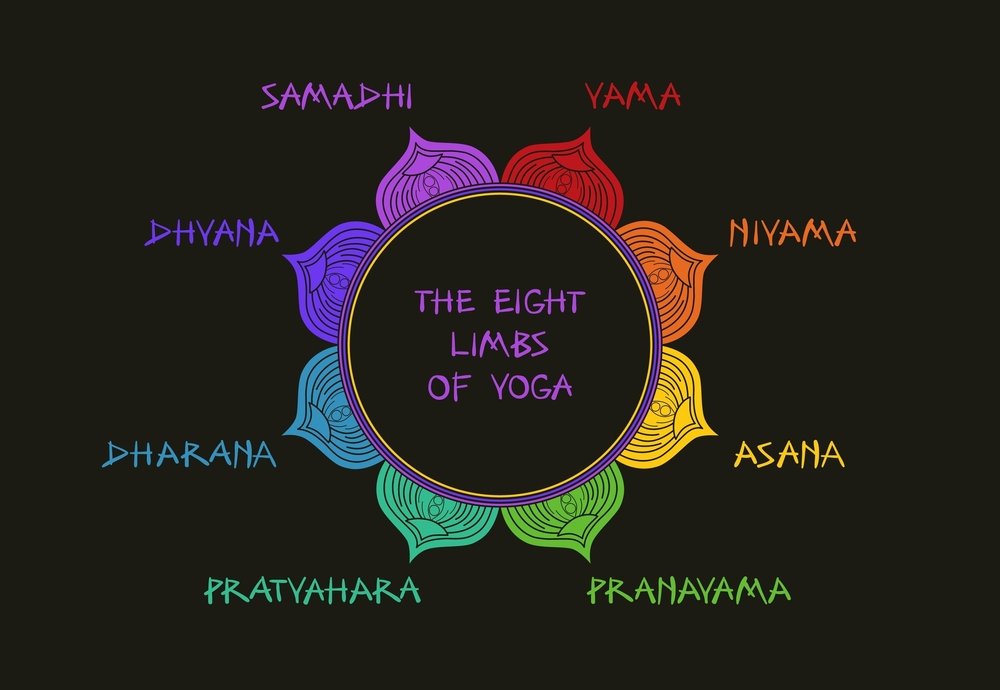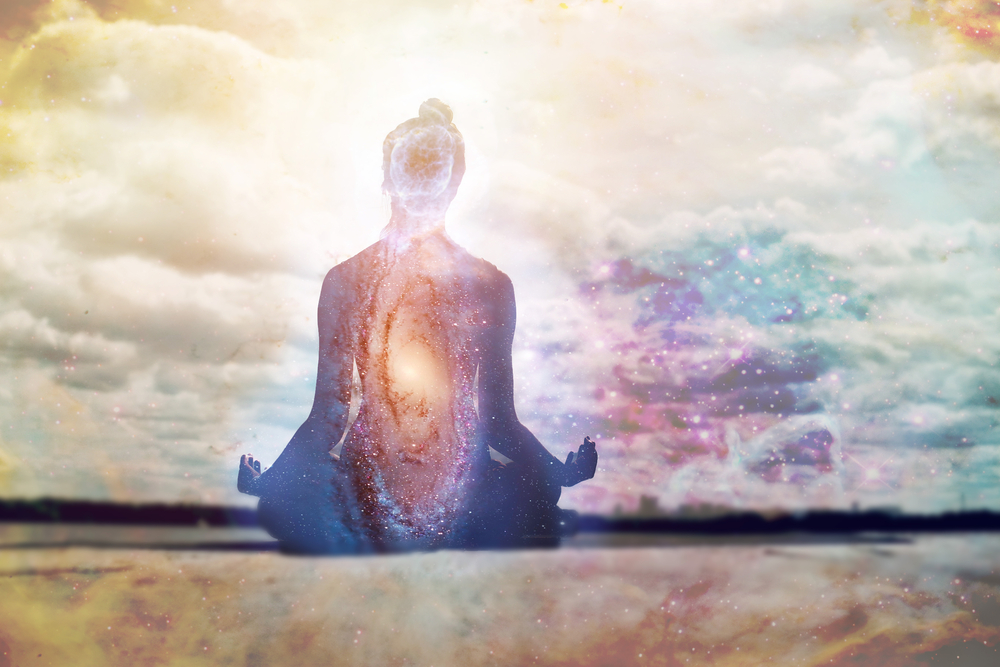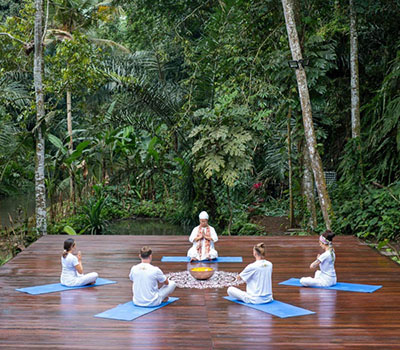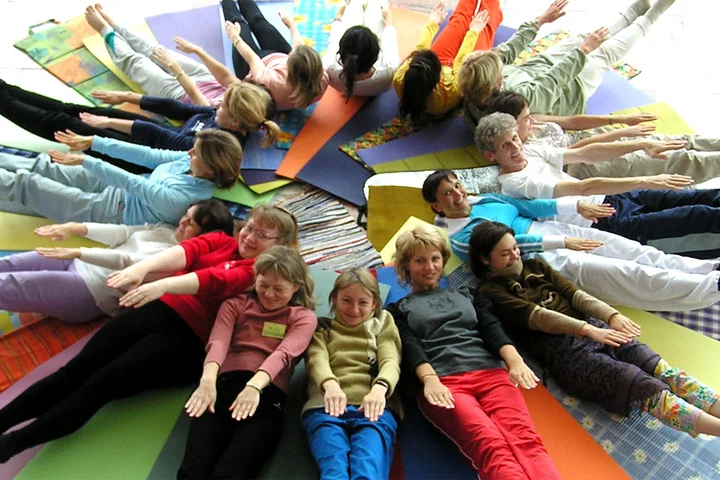Finding Your Center: Understanding Samadhi Beyond the Asanas
Greetings to all!
It is always a pleasure to be with you here and share a little more about this beautiful and powerful practice of yoga. Last time we chatted a bit about the idea of Samadhi, which is often portrayed as the highest state of yoga practice, something only attainable by very advanced yogis (but which we know is a potential inherent in all of us); accessing this state of deep interconnectedness and bliss has the potential to improve our lives on and off the mat. We want to dive deeper into Samadhi and unpack this notion a little further– its significance, and how we can nurture this more and deeper understanding of Samadhi and arrive at this state of transformation in our own yoga practice.
We shall take on this dive equally and in an accessible way, in much the same way as if we were sitting with you for a cup of tea.
The Eight Limbs and the Ascent to Samadhi
In classical teaching, Patanjali’s Yoga Sutras presents fellow yogis with yoga as an 8-limb path (Ashtanga Yoga, although it is not to be mistaken for the style with the modern interpretation of movement in asana). The 8 limbs of yoga provide us with a holistic way of living meaningfully and purposefully, with samadhi being the ultimate goal. Understanding these limbs of yoga provides much-needed context when considering the place of Samadhi and its significance.

Also Read: The Science of Auras and How Yoga Affects Your Energetic Field
Here is a brief summary of the eight limbs:
- Yamas (Moral Restraints): These are ethical behaviors that regulate our conduct with the external world. The five yamas include ahimsa (non-violence), satya (truthfulness), asteya (non-stealing), brahmacharya (continence), and aparigraha (non-possessiveness).
- Niyamas (Moral Observances): These are observances of self-discipline designed to develop inner well-being. The five niyamas include saucha (purity), santosha (contentment), svadhyaya (self-study), tapas (austerity), and Ishvara Pranidhana (surrender to God).
- Asana (Postures): As we alluded to, these are the physical practices we do that emphasize strength, flexibility, and stability in the physical body, preparing us to be steady for a longer duration.
- Pranayama (Breath Regulation): The conscious control of the breath helps promote calmness in the nervous system, provides focus for the mind, and develops vital energy.
- Pratyahara (Withdrawal of the Senses): Pratyahara promotes an inwardly directed awareness by releasing dependence on the outer world and external senses.
- Dharana (Focused Attention): This limb focuses the mind on one area or object of concentration and trains the mind to attend.
- Dhyana (Meditation): Allows for a sustained flow of awareness that keeps deepening to a place of unbroken flow.
- Samadhi (Union or Absorption): Samadhi works as the conclusion of the previous all yoga limbs that we have read above, it is also known as a state of complete absorption in which the individual self combines with the object of meditation, breaking the subject-object separation.
To make it in a way, most of us begin our yoga practice with asanas and pranayama, as they are the easy way to begin and which serve as a stepping stone to more interior disciplines such as pratyahara, dharana, dhyana, and samadhi.
Beyond The Physical: The State of Samadhi

Also Read: Yoga Philosophy in Bali: A Deeper Understanding
Consistent asana practice and an understanding of breath are essential for preparing the body and mind; yet, samadhi extends beyond the physical state of the body. It is a state of stillness and clarity of mind. In the same way, imagine a lake disturbed by strong winds. The water is muddy, and there are no visual connections to the intention to travel deeper. In unsettling ways, this is like our mind. We are constantly bombarded and agitated by people, thoughts, worries, senses, and stimuli.
By engaging with the practices of dharana and dhyana, always moving forward, we discovered that the wind of the mind began to slow down…the mental chatter quiets down and the “water” begins to settle, and we are dispersed into the stillness of clarity in the water of consciousness that was once agitated and moving. It is in this clarity we begin to see and be in the reality we live, no longer filtered through our ego or mental framework.
In modern practices, samadhi is usually described as a state of union but not physically. It is not understood as the union of the self with the divine (or universal consciousness); it is the realization of the connection of the self as not separate from the divine (or universal consciousness), the interconnection of everything. The understanding that brings forth is an overwhelming amount of peace, joy, and freedom.
Different interpretations of samadhi
It is important to note that samadhi is not an experience of uniformity. There are different aspects to samadhi in different schools of thought within yoga and/or spirituality. However, the essence of samadhi is where the ego is transcended and unity is experienced.
Some traditions refer to one aspect of samadhi as savikalpa samadhi (samadhi with support), where awareness of the object of meditation is still subtle. Nirvikalpa samadhi (samadhi without support) is described as pure consciousness with no object or thought. This is an advanced state of awareness reached through years of meditation and spiritual practices.
For many of us, samadhi may be a more subtle experience, those moments of complete presence and awareness that seem to happen unexpectedly in our practice or in life. Maybe it could be that feeling of total surrender in a stunning sunset, the completely effortless state of creative flow, or the very real sense of being one with nature. Each of these experiences offers you a taste of the stillness and oneness at the core of Samadhi.
Cultivating the Seed of Samadhi in Your Practice

Also Read: Unraveling Your Inner Yogi: A Personalized Journey Through Yoga Styles
While attaining deep ecstatic states may seem out of reach, it is the process that transforms oneself. Every time you step on your mat, every time you turn inward, and every time you pay attention to your breath, you are sowing the seeds of Samadhi.
Here are some ideas for nurturing your cultivation:
- Grow Your Meditation Practice: Spend time each day in stillness, even one or two minutes if that is all you have. Make time, when you can, to look into different meditation types to see what resonates best for you. Focusing on the breath, pranayama, a mantra, and a visual will support you in developing dharana, ultimately leading to dhyana.
- Practice Mindfulness as Part of Daily Life: Expand the principles of yoga into your life. It is very accessible to maintain full mind-body awareness of anything you are doing in any context: at a meal, walking, or conversing. By practicing continuously bringing your attention to the present moment, you allow your mind to settle and quiet its restlessness.
- Practice Non-Attachment: The ego often builds barriers on the road to Samadhi by getting attached to the desired outcome or identity of attachment to material goods. Practicing non-attachment (aparigraha) in everyday tasks will make the attachment become loose and create energy for new experiences deeper.
- Practice Self-Study (Svadhyaya): Read the philosophical texts of yoga as well as other spiritual traditions. Thinking in theory can provide important insights and motivation for your journey.
- Practice with Intention: Bring intention into your asana and pranayama practice. Focus not only on the physical postures or breathing methods, but also on the inner awareness and quiet that accompany the practice.
Samadhi: The Journey of Growing
Finally, the value of Samadhi rests in the process of self-awareness and inward investigation, rather than the goal itself. It is about shedding the layers of ego and conditioning in order to access the pure, light consciousness that we have all discovered inside ourselves.
The asanas prepare the body, the pranayama approximates the breath and regulates the mind, the dharana organizes our attention, and the dhyana allows for deeper engagement and involvement with our consciousness. Samadhi is the blooming of these efforts—a deep sense of peace and joy occurs once the mind is still and we can remain in touch with our True Self.
So, in your yoga practice, every breath, every movement, and every moment of awareness is an opportunity to embrace the journey of understanding Samadhi and experiencing that profound unity to which we are all entitled.
What is your perspective on meditation’s role in your yoga journey? How do you find moments of stillness every day? Got a good story? We would love to know!






